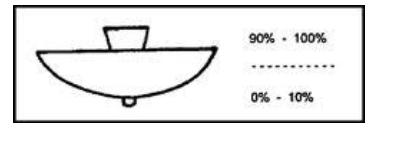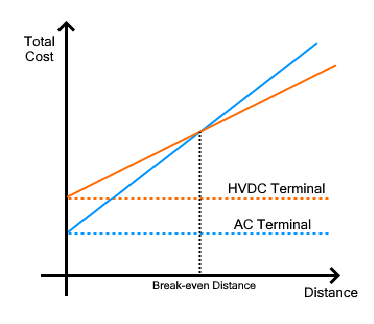TRANSFORMER
MAINTENANCE GUIDELINES
Following specific checking and maintenance guidelines as
well as conducting routine inspections will help ensure the prolonged life and
increased reliability of a transformer. The frequency of periodic checks will
depend on the degree of atmospheric contamination and the type of load applied
to the transformer.
Routine checks and
resultant maintenance
|
Sl
No
|
Inspection
Frequency
|
Items
to be inspected
|
Inspection
Notes
|
Action
required if inspection shows unsatisfactory conditions
|
|
1.1
|
Hourly
|
Ambient Temperature
|
-
|
-
|
|
1.2
|
Hourly
|
Oil & Winding Temperature
|
Check that temperature rise is
reasonable
|
Shutdown the transformer and
investigate if either is persistently higher than normal
|
|
1.3
|
Hourly
|
Load (Amperes) and Voltage
|
Check against rated figures
|
Shutdown the transformer and
investigate if either is persistently higher than normal
|
|
2.1
|
Daily
|
Oil level in transformer
|
Check against transformer oil level
|
If low, top up with dry oil examine
transformer for leaks
|
|
2.2
|
Daily
|
Oil level in bushing
|
|
|
|
2.3
|
Daily
|
Relief diaphragm
|
|
Relief diaphragm
|
|
3.1
|
Quarterly
|
Bushing
|
Examine for cracks and dirt deposits
|
Clean or replace
|
|
3.2
|
Quarterly
|
Oil in transformer
|
Check for dielectric strength &
water content
|
Take suitable action
|
|
3.3
|
Quarterly
|
Cooler fan bearings, motors and
operating mechanisms,
|
Lubricate bearings, check gear boxes,
examine contacts
|
Replace burnt or worn contact or other
parts
|
|
4.1
|
Yearly
|
Oil in transformer
|
Check for acidity and sludge
|
Filter or replace
|
|
4.2
|
Yearly
|
Oil filled bushing
|
Test oil
|
Filter or replace
|
|
4.3
|
Yearly
|
Gasket Joints
|
-
|
Tighten the bolts evenly to avoib
uneven pressure
|
|
4.4
|
Yearly
|
Cable
|
boxes Check for sealing arrangements
for filling holes.
|
Replace gasket, if leaking
|
|
4.5
|
Yearly
|
Surge Diverter and gaps
|
Examine for cracks and dirt deposits
|
Clean or replace
|
|
4.6
|
Yearly
|
Relays, alarms & control circuits
|
Examine relays and alarm contacts,
their operation, fuses etc. Test relays
|
Clean the components and replace
contacts & fuses, if required.
|
|
4.7
|
Yearly
|
Earth resistance
|
|
Take suitable action, if earth
resistance is high
|
IR testing:
The
transformer should be de-energized and electrically isolated with all terminals
of each
winding shorted
together. The windings not being tested should be grounded. The meg-ohmmeter
should be applied
between each winding and ground (high voltage to ground and low voltage to
ground) and
between each set of windings (high voltage to low voltage). The meg-ohm values
along with the
description of the instrument, voltage level, humidity, and temperature should
be
recorded for
future reference.
The
minimum megaohm value for a winding should be 200 times the rated voltage of
the winding
divided by 1000.
For example, a winding rated at 13.2kV would have a minimum acceptable value
of 2640 megaohms
([13,200V x 200] / 1000). If previously recorded readings taken under similar
conditions are
more than 50% higher, the transformer should be thoroughly inspected, with
acceptance tests
performed before reenergizing.
Turns ratio testing:
The
transformer turn ratio is the number of turns in the high voltage winding
divided by the
number of turns in the low
voltage winding. This ratio is also equal to the rated phase voltage of
the high voltage winding being
measured divided by the rated phase voltage of the low voltage
winding being measured.
Transformer turns
ratio measurements are best made with specialized instruments that include
detailed connection and operating
instructions. The measured turns ratio should be within 0.5% of
the calculated turns ratio.
Ratios outside this limit may be the result of winding damage, which has
shorted or opened some winding
turns.
Insulation PF testing:
Insulation PF is the ratio of the
power dissipated in the resistive component of the insulation
system, when tested under an
applied AC voltage, divided by the total AC power dissipated. A
44
perfect insulation would have no
resistive current and the PF would be zero. As insulation PF
increases, the concern for the
integrity of the insulation does also. The PF of insulation systems of
different vintages and manufacturers
of transformers varies over a wide range (from under 1% to
as high as 20%). As such, it's
important that you establish a historic record for each transformer
and use good judgment in
analyzing the data for significant variations.
Acceptance testing
Acceptance tests are
those tests made at the time of installation of the unit or following a service
interruption to demonstrate the
serviceability of the transformer. This testing also applies to drytype
units. The acceptance tests
should include IR testing, insulation PF measurement, and turns
ratio testing, all as described
under periodic tests. In addition, winding resistance measurements
should be made and excitation
current testing done.
Winding resistance measurement:
Accurate measurement of the resistance between
winding terminals can give an indication of
winding damage, which can cause changes to some or all of the winding
conductors. Such
damage might result from a transient winding fault that cleared;
localized overheating that opened
some of the strands of a multi-strand winding conductor; or short
circuiting of some of the winding
conductors.
Sometimes, conductor strands will burn open like a
fuse, decreasing the conductor cross section
and resulting in an increase in resistance. Occasionally, there may be
turn-to-turn shorts causing
a current bypass in part of the winding; this usually results in a
decrease of resistance.
To conduct this test, the transformer is de-energized and disconnected
from all external circuit
connections. A sensitive bridge or micro-ohmmeter capable of measuring
in the micro-ohm range
(for the secondary winding) and up to 20 ohms (for the primary
winding) must be used. These
values may be compared with original test data corrected for temperature
variations between the
factory values and the field measurement or they may be compared with
prior maintenance
measurements. On any single test, the measured values for each phase
on a 3-phase
transformer should be within 5% of the other phases.
Excitation current measurement:
The excitation
current is the amperage drawn by each primary coil, with a voltage applied to
the
input terminals of the primary
and the secondary or output terminals open-circuited. For this test,
the transformer is disconnected
from all external circuit connections. With most transformers, the
reduced voltage applied to the
primary winding coils may be from a single-phase 120V supply.
The voltage should be applied to
each phase in succession, with the applied voltage and current
measured and recorded.
If there is a defect
in the winding, or in the magnetic circuit that is circulating a fault current,
there
will be a noticeable increase in
the excitation current. There is normally a difference between the
excitation current in the primary
coil on the center leg compared to that in the primary coils on the
other legs; thus, it's preferable
to have established benchmark readings for comparison.
Variation in current versus prior
readings should not exceed 5%. On any single test, the current
and voltage readings of the
primary windings for each of the phases should be within 15% of each
other.
Applied voltage testing:
The applied voltage test is more commonly
referred to as the "hi-pot test." This test is performed
by connecting all terminals of
each individual winding together and applying a voltage between
windings as well as from each
winding to ground, in separate tests. Untested windings are
grounded during each application
of voltage.
This test should be
used with caution as it can cause insulation failure. It should be regarded as
a
proof test to be conducted when
there has been an event or pattern in the transformer's operating
history that makes its insulation
integrity suspect.
45
DC applied voltage
tests are often conducted in the field because DC test sets are smaller and
more readily available than AC
applied voltage sets. With DC tests, the leakage current can be
measured and is often taken as a
quantitative measure. However, DC leakage current can vary
considerably from test to test
because of creepage across the complex surfaces between
windings and between windings and
ground.
The use of AC voltage
is preferable since the transformer insulation structures were designed,
constructed, and tested with the
application of AC voltage intended.
Impedance testing:
An
impedance test may be useful in evaluating the condition of transformer
windings, specifically
for detecting
mechanical damage following rough shipment or a service fault on the output
side
that caused high
fault currents to flow through the transformer windings. Mechanical distortion
of
the windings will
cause a change in their impedance. To maximize the effectiveness of this test,
a
measurement should
be taken during the transformer's initial installation to establish a benchmark
value.
An
impedance test is performed by electrically connecting the secondary terminals
together with aconductor capable of carrying at least 10% of the line current
and applying a reduced voltage to
the primary
windings. This is easily accomplished by applying a single-phase voltage to
each
phase in
succession. The applied voltage is measured at the primary terminals and the
current
measured in each
line.
These
values shall be recorded and then calculate the ratio of voltage to current for
each phase.
This ratio should
be within 2% for each phase and should not vary more than 2% between tests.
A variation of
more than 2% indicates the possibility of mechanical distortion of the winding
conductors, which
should be investigated as soon as possible.




 (iii) Semi-direct System
(iii) Semi-direct System
 (iv) Semi-indirect Lighting
(iv) Semi-indirect Lighting
 (v) General Diffusing System
(v) General Diffusing System








